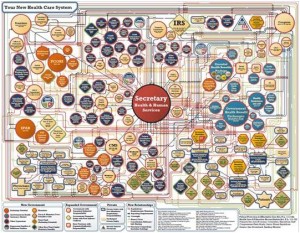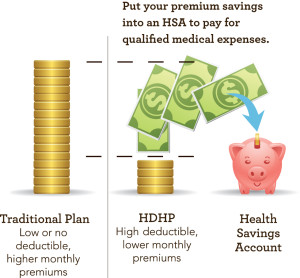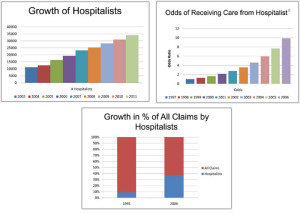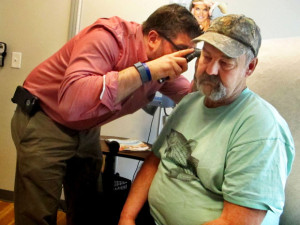
Yesterday I saw a long time patient who is on Medicaid due to disability. He is a great kid that is legitimately on aid due to mental illness. He has not had the best hand of cards dealt to him, but has a loving grandmother who has raised him as her own. She pays me directly because she knows I have his back and she values the relationship I have built with him. They trust me to always do the right thing for him and their loyalty to me is very much appreciated.
So yesterday he called first thing in the AM with a complaint of 4 days of abdominal pain with no appetite and low grade fever. Now this guy is very stoic and not a complainer so I always know that something isn’t right if he is complaining. We got him right in and evaluated him. He had some point tenderness right over McBurney’s point (where your appendix is) and had a low grade fever. He needed a CAT scan to rule out an appendicitis which Meghann, my LPN, scheduled for noon at our local hospital. For those who do not understand direct care, even though I do not take payment from Medicaid, the hospital would just bill Medicaid for the CAT scan and lab work etc etc. If he did indeed have appendicitis we would get him seen by surgery and all of his care would be billed to Medicaid- essentially the taxpayers in MA.
Well it took no less than a 20 minute phone call to get this scheduled, after which Meghann is told that Medicaid will not “approve/authorize” the CT scan because I am not a “Medicaid provider.” Now some readers may think I’m the jerk for not contracting with Medicaid and your entitled to your opinion, but this patient has paid me to work for him. (Maybe after you finish reading this you will understand why I dropped out.) Now we have a patient who is sick, a doctor that is trying to treat him expeditiously based on years of training, and indirectly you the taxpayer all at the mercy of insane, bureaucratic nonsense. My only choice was to have him go to the ER and be evaluated….again….by another physician in order to get a CAT scan of his abdomen (with contrast an abdominal CT is about 600-800 per the Healthcare Bluebook). So instead of just paying this amount, as his CT was fortunately negative, your state bureaucracy decided it would be better to add on the cost of an ER evaluation and 5 hour stay as well to the taxpayers bill.
Does this make any sense to anyone? If it does than maybe you took a different economics course than I did. So there is a story of a broken system that just cost you a few extra grand because the doctor was regulated. Wonder how the system worked when the Brady Bunch was on? Did Marcia need a “Prior Authorization” from an “in-network doctor” to have her nose looked at after she got smacked in the face with a football?
Off to Kansas City to the DPC Summit today to try to fix this mess and get people the care they deserve.








